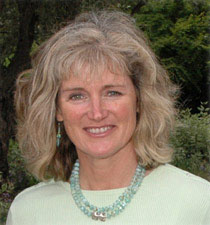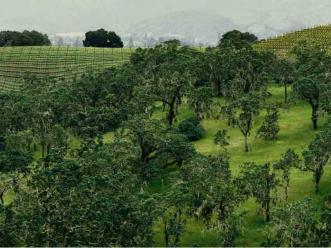
Heidi Peterson Barrett is currently winemaker for Amuse Bouche, Paradigm, Revana, Barbour, Lamborn, Fantesca, as well as her own label La Sirena. I recently had the pleasure of catching up with Heidi to talk about winemaking, her own La Sirena label, and the legacy of Screaming Eagle.
What prompted you to pursue winemaking as a career? If not winemaking, what path would you have chosen?
Growing up with a scientist winemaker father and an artist mother was my introduction. You always hear about winemaking being a blend of art and science so no wonder that I was drawn to winemaking. I almost went into marine biology and am still facinated by the wonders of the ocean world. I became a scuba diver in 1977 and continue to dive recreationally. My winery name La Sirena means "the mermaid" so it ties my two main interests together.
Describe your winemaking philosophy:
It's pretty simple. I try to maximize the potential of any given vineyard or estate and make the best wine I can. I ask myself the question "What's possible?" when I look at a vineyard.
IntoWineTV's most recent segment focused on wines made by women (Editors note: Heidi Peterson Barrett's 2004 La Sirena Syrah was included in IntoWineTV's Wines Made by Women segment and can be viewed here). As winemaking has historically been a male dominated profession, how has opportunity changed for women in winemaking since you embarked on your career in the early 80's?
I think the opportunities always existed, but most women never considered wine as a career early on. There were very few women winemakers then. I never felt like I was held back because I was a female in the cellar but was viewed as a curiosity more than anything. Once the crew saw how hard I worked, I was just one of them and was respected. Now it's quite common to find women in all aspects of the wine business.
What prompted you to start the La Sirena label?
Opportunity. I had a custom crush client that I had made wine for, and their plans changed so they couldn't go forward with their brand. We were going to have to bulk out this beautiful wine and I thought, Hmm, maybe I can buy it! This is my chance. That got me going and then I had a chance to think about it and really decide what I wanted to make for La Sirena.
Your wines have earned 100 point scores, sold for thousands of dollars per bottle, and you are arguably one of the the most sought after and respected winemakers in California, if not the world. As a winemaker, what drives you going forward?
Always the challenge of trying to do better and striving to make great wines consistently. I always have something new going on which keeps it exciting and fun.
If you could go back in time and tell Heidi Peterson circa 1980 what the winemaking world is like in 2008, what would she be most surprised by?
That winemakers could become famous and be superstars in the wine world and that some in the world of wine would put me in that league. I always just tried to make the best wines I could and never planned to be famous.
Now that years have passed, what are your thoughts when you reflect back on your time -and the impressive accolades and high valuations- at Screaming Eagle?
It was a good ride but I wish I had been made a partner. I am very proud of the wines I made there for 14 years and how consistent they were. That's the hard part, especially once the expectations were so high. I definitely felt the pressure to make it happen, year after year. But it made me a better winemaker to rise to the occasion and figure it out. It was a winemaker's wine, not a terroir wine. So now I put that focus and know-how into my wines at La Sirena. My 2005 Cab is a direct reflection of my blending and winemaking experience there. It is a recognizable style.
Rising wine alcohol levels are a hot topic these days in wine circles. What are your thoughts on the subject?
I think the pendulum is starting to swing the other way. We saw this cycle once before with the "late harvest" wines of the 70's. Remember that? They were super ripe, high alc reds, especially Zin. Then there were the "food wines" of the 80's that went too far the other way, so light they were wimpy. I have always tried to make super balanced wines where the alcohol is not the focus (and is hopefully never actually noticable) no matter what the trend is. If the alc. stands out, it's out of balance. The best is when you optimize ripeness without going for raisin or pruney flavors. I'm not interested in making port from the beautiful Cab grapes I work with. I believe this last wave of hi alc. wines came from the perception that higher alc equals higher points. For some writers maybe so, but of all the wines I made that got 100's or other hi scores, they were not high alcohol, just purely delicious balanced flavorful wines. Sounds easy doesn't it?
Much is written and debated concerning the ubiquitous 100 point rating scale, made popular by Robert Parker and emulated by seemingly everyone. Some say it has empowered the consumer, others claim it has distorted wine prices, while still others say it has gone much further and actually changed the quality of the wine being produced. What do you see as being the long term impact of this ever-so-powerful 100 point rating system?
Well, it's tricky because you've got to have a way to convey information about a wines qualities and flavors but the 100 point system is only one way. The real problem is that it doesn't give consumers enough information. If you took 5 wines that all got 94 points, you still don't know if you would like them or what they taste like. They are probably quite different from each other, some you would like more than others, yet they all got the same points. Another thing about Robert Parkers' version of the 100 point scale that not many people realize is that the last 10 points are only for wines that age. I asked him directly about this once. For something like Chenin Blanc or even my dry Moscato Azul, the best you can get is 90 points. The scale only goes to 90 points for those wines. You could never have a 100 for a wine like that. Good to know.
What advice do you have for today's aspiring winemakers?
Work for winemakers you respect and learn from the best. Get a variety of experience. It will help you when some unusual circumstance comes your way. Stay passionate, positive, and focus on the wines you love. Keep learning. No matter how long you have been doing this there is always more to learn. Have fun.






